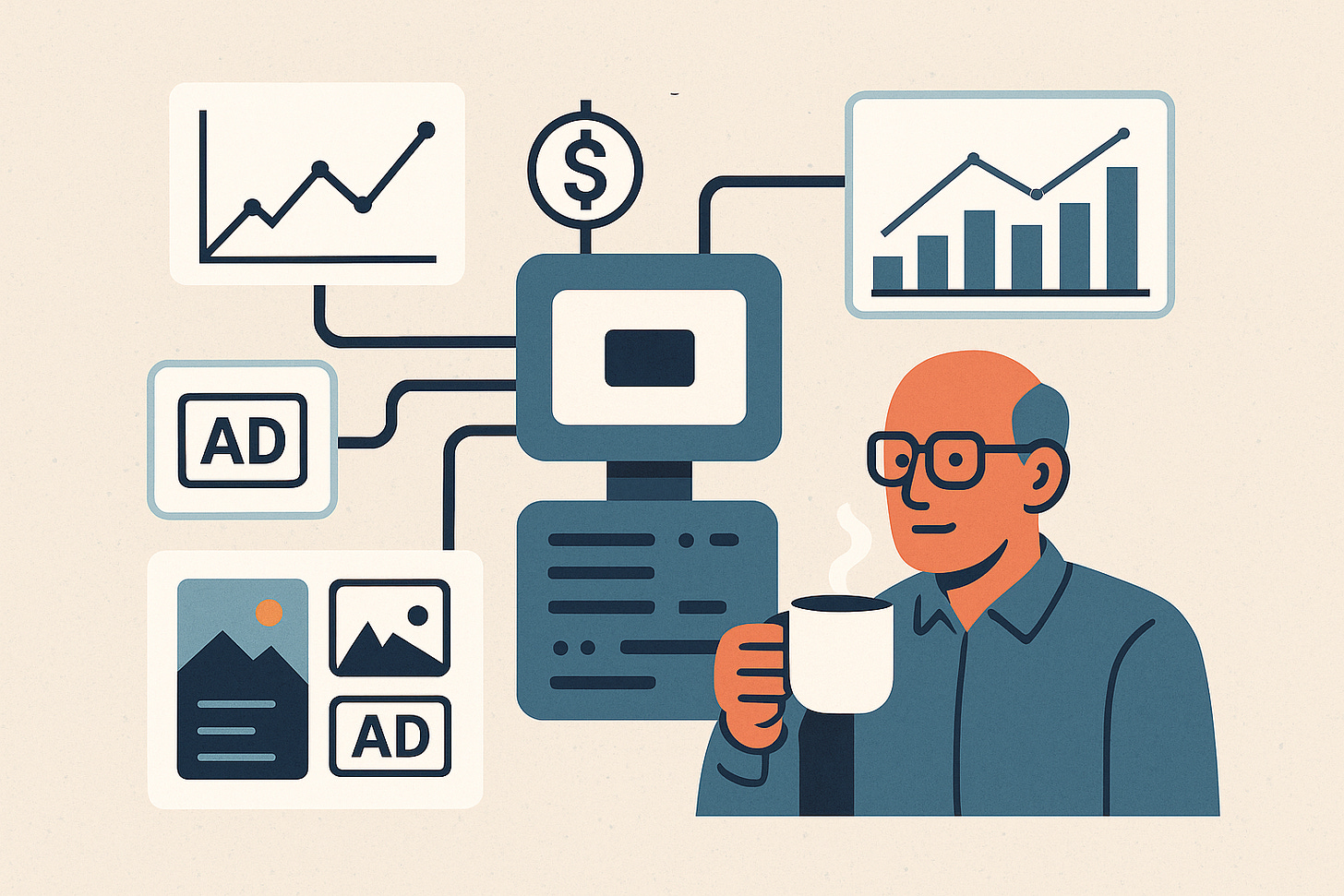AI in Action: New Research on Smarter Bidding and Creative Diversity
New research shows AI boosting bidding efficiency and creative variety.
August 2025 saw a wave of new academic work at the intersection of artificial intelligence and advertising technology. While AI has been a headline topic across industries for several years, these studies move the conversation from broad potential to specific applications in bidding and creative optimization.
Two frameworks in particular — GRAD (Generative Large-scale Pre-trained Models for Automated Ad Bidding Optimization) and DIVER (a framework for improving diversity in ad headline generation) — highlight how researchers are rethinking both sides of the digital advertising equation: how ads are delivered and how they are created.
Smarter Bidding with GRAD
The GRAD framework, introduced in a preprint published this month, explores how generative transformer models can be applied to programmatic ad bidding. Traditional bidding strategies rely heavily on statistical models that predict click-through rates or conversion probabilities. GRAD takes a different approach, using generative models to simulate and optimize bidding strategies under a variety of conditions.
The authors argue that this method can:
Better capture complex relationships between audience behavior and auction dynamics.
Reduce wasted spend by adjusting bids in near real time.
Improve overall efficiency by exploring a wider space of possible outcomes than traditional models allow.
While GRAD is still a research prototype, it illustrates how techniques that first gained traction in language and image generation are now being adapted to the economics of advertising.
Creative Diversity with DIVER
On the creative side, a separate research team released DIVER, a framework designed to improve ad headline generation. Much of the early work applying large language models (LLMs) to ad creative focused on maximizing quality metrics such as clarity or engagement. DIVER extends that by also optimizing for diversity — ensuring that generated headlines don’t converge on a single “safe” format.
The researchers argue that diversity matters for two reasons:
Audience variation: Different segments may respond to different tones, styles, or calls to action.
Ad fatigue: Repetition of similar creative reduces effectiveness over time, making variety a performance factor.
In controlled experiments, DIVER produced headline sets that balanced quality with measurable increases in diversity, potentially giving advertisers more tools to test and rotate creative assets effectively.
Why These Developments Matter
Although both GRAD and DIVER are research projects rather than commercial products, they highlight two themes shaping the future of ad tech:
AI is expanding into the mechanics of media buying. Models that can simulate or generate bidding strategies point toward more adaptive and efficient markets.
Creativity is being reframed as an optimization problem. By quantifying and engineering diversity, researchers are signaling that variety itself is an input to campaign performance.
Together, these developments suggest that AI is not just a tool for automation, but a way of rethinking how advertising functions at both the transactional and creative levels.
The Broader Context
These studies also arrive at a time when advertisers are asking for more: more efficiency, more accountability, and more relevance. Programmatic channels continue to grow, but so does scrutiny over whether they deliver genuine value. Academic research like GRAD and DIVER provides a window into how future systems might meet those expectations — by making campaigns not just automated, but measurably smarter.
For the ad tech ecosystem, the takeaway is less about specific models and more about direction. AI is moving deeper into the infrastructure of advertising, from bid strategies to creative generation. The coming years will likely bring further experimentation, alongside questions about bias, transparency, and how to balance automation with human judgment.
Closing Thoughts
The release of GRAD and DIVER underscores how quickly academic research is converging with industry challenges. Tariffs, regulation, and macroeconomic shifts dominated headlines in August, but behind the scenes, advances in AI point to a quieter transformation: advertising systems that learn, adapt, and generate in ways that were impossible just a few years ago.
Whether these specific frameworks gain traction or not, the signal is clear. AI is no longer a peripheral add-on in ad tech — it is becoming central to how campaigns are planned, optimized, and measured.


